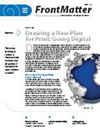Provisioning Ecosystem Services of Wild Plants Collected From Seminatural Habitats: A Basis for Sustainable Livelihood and Multifunctional Landscape Conservation
IF 1.8
4区 环境科学与生态学
Q4 ENVIRONMENTAL SCIENCES
引用次数: 2
Abstract
Wild plants from seminatural habitats (meadows, pastures, shrubland, etc) provide numerous ecosystem services (ESs). However, because of land abandonment and reforestation processes, these habitats and the ESs provided by them are declining. The aim of this study was to identify how local people benefit from collecting wild plants from seminatural habitats, in order to link the identified ESs with conservation practices. The research was based on a survey of 85 inhabitants of the Pieniny Mountains (Poland). The results showed that 89% of respondents regularly collected wild plants from seminatural habitats for different reasons. The most common ESs gained from this activity were natural medicine, direct consumption, and food. Furthermore, particular species have crucial meaning for some ESs, such as direct consumption, food, natural medicine, and cosmetic purposes. For others, such as decoration, ritual purposes, or forage, only specific parts or types of plants, such as flowers, herbs, or grasses, are desirable, regardless of species. In terms of households, 38% used ESs from seminatural habitats as an additional source of livelihood. Promoting engagement in activities more adapted to the current economic situation (eg ecotourism and selling processed wild plant products) may be a good solution for using wild plants more profitably (serving as a basis for livelihood), combined with grassland conservation.半自然生境野生植物提供生态系统服务:可持续生计和多功能景观保护的基础
来自半自然栖息地(草甸、牧场、灌木地等)的野生植物提供了许多生态系统服务(ESs)。然而,由于土地遗弃和重新造林过程,这些栖息地及其提供的生态环境正在减少。本研究的目的是确定当地人如何从从半自然栖息地收集野生植物中获益,以便将已确定的ESs与保护措施联系起来。这项研究是基于对波兰Pieniny山脉85名居民的调查。结果显示,89%的受访者出于不同原因定期从半自然栖息地采集野生植物。从这一活动中获得的最常见ESs是天然药物、直接消费和食品。此外,特定物种对某些ESs具有重要意义,如直接消费、食品、天然药物和美容目的。对于其他的,如装饰,仪式目的,或饲料,只有特定的部分或类型的植物,如花,草药,或草,是可取的,不管物种。就家庭而言,38%的家庭使用来自半自然栖息地的能源作为额外的生计来源。促进参与更适应当前经济形势的活动(如生态旅游和销售加工过的野生植物产品)可能是一个很好的解决方案,可以更有效地利用野生植物(作为生计的基础),并结合草原保护。
本文章由计算机程序翻译,如有差异,请以英文原文为准。
求助全文
约1分钟内获得全文
求助全文
来源期刊
CiteScore
3.10
自引率
18.80%
发文量
36
审稿时长
4.5 months
期刊介绍:
MRD features three peer-reviewed sections: MountainDevelopment, which contains “Transformation Knowledge,” MountainResearch, which contains “Systems Knowledge,” and MountainAgenda, which contains “Target Knowledge.” In addition, the MountainPlatform section offers International Mountain Society members an opportunity to convey information about their mountain initiatives and priorities; and the MountainMedia section presents reviews of recent publications on mountains and mountain development.
Key research and development fields:
-Society and culture-
Policy, politics, and institutions-
Economy-
Bio- and geophysical environment-
Ecosystems and cycles-
Environmental risks-
Resource and land use-
Energy, infrastructure, and services-
Methods and theories-
Regions

 求助内容:
求助内容: 应助结果提醒方式:
应助结果提醒方式:


